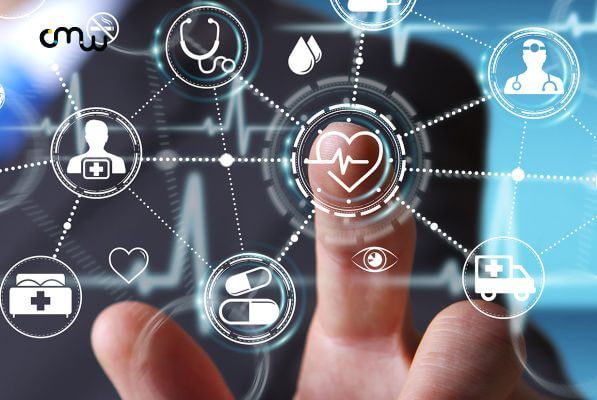Augmented reality (AR) has emerged as a transformative technology in various industries, including healthcare. Its unique ability to merge digital information with the natural world opens up new possibilities for patient education and engagement. In healthcare, patient education plays a crucial role in empowering individuals to make informed decisions about their health and treatment options. However, traditional methods of patient education often fall short of capturing attention and facilitating deep understanding. This is where augmented reality comes in, offering an innovative and immersive approach to educate patients and enhance their engagement. This article explores the power of augmented reality in patient education and employment, highlighting its benefits, applications, and potential impact on healthcare outcomes.
Understanding Augmented Reality
Augmented reality (AR) refers to the technology that overlays digital content in the real world, creating an enhanced and interactive user experience. Unlike virtual reality (VR), which immerses users in a completely virtual environment, AR enhances the real world by adding virtual elements that blend seamlessly with the physical surroundings. AR technology utilizes devices such as smartphones, tablets, and specialized AR glasses to display virtual objects or information in real time.
The underlying principle of AR involves computer vision and tracking techniques that enable the system to recognize and analyze the real-world environment. By doing so, the technology can accurately position and integrate virtual objects into the user's field of view. AR has gained significant attention and adoption across various industries, including entertainment, gaming, education, and healthcare.
In the context of healthcare, AR holds immense potential to transform patient education and engagement. It enables healthcare professionals to present complex medical information, anatomical structures, and treatment procedures in a visually interactive and immersive manner. By overlaying digital content onto real-world objects, AR can enhance understanding, facilitate engagement, and improve patient outcomes.
The Role of Patient Education in Healthcare
Patient education plays a crucial role in healthcare as it empowers individuals to make informed decisions about their health and well-being. It involves providing patients with accurate and accessible information about their medical conditions, treatment options, preventive measures, and self-care strategies. The goal of patient education is to enhance health literacy, promote active participation in healthcare decision-making, and improve health outcomes.
Effective patient education helps individuals understand their medical conditions, including the causes, symptoms, and potential complications. It educates them about available treatment options, their benefits, risks, and expected outcomes. Patient education also focuses on promoting healthy behaviors and lifestyle modifications to prevent or manage chronic conditions.
By providing patients with the necessary knowledge and skills, patient education enhances self-management and encourages adherence to treatment plans. It fosters shared decision-making between patients and healthcare providers, promoting a collaborative and patient-centered approach to care.
Augmented Reality in Patient Education
Augmented Reality (AR) has emerged as a powerful tool in patient education, revolutionizing the way medical information is delivered and understood. AR combines virtual elements with the real world, creating an immersive and interactive experience for patients.
In inpatient education, AR enables healthcare providers to visualize complex medical concepts and procedures in a simplified and visually engaging manner. Patients can view 3D models of organs, systems, or medical devices overlaid onto their own bodies or physical objects, allowing for a deeper understanding of their condition. AR can also simulate medical procedures, giving patients a realistic experience and preparing them for what to expect.
AR enhances patient engagement by providing personalized and interactive learning experiences. Patients can actively explore and manipulate virtual objects, facilitating a hands-on approach to learning. They can access educational content through mobile devices or specialized AR headsets, making information easily accessible and portable.
Moreover, AR enhances the effectiveness of patient education by improving information retention and comprehension. The visual and interactive nature of AR aids in memory retention and increases patient involvement in the learning process. It also promotes active engagement and encourages patients to ask questions and seek further clarification.
Overall, augmented reality in patient education has the potential to transform the healthcare landscape by making complex medical information more accessible, engaging, and understandable for patients, ultimately improving their health literacy and empowering them to take an active role in their care.
Enhancing Patient Engagement through Augmented Reality
Augmented Reality (AR) has the capability to enhance patient engagement in healthcare significantly. By merging virtual elements with the real world, AR creates interactive and immersive experiences that captivate patients and encourage their active participation in their healthcare journey.
AR technology enables patients to visualize medical information and procedures in a more engaging and relatable manner. It allows them to explore 3D models, interactive diagrams, and animations that provide a deeper understanding of their condition, treatment options, and the impact of lifestyle choices on their health.
Through AR, patients can actively engage with their healthcare providers, asking questions, seeking clarification, and actively participating in shared decision-making. This increased engagement fosters a stronger patient-provider relationship and empowers patients to make informed choices about their health.
Furthermore, AR-based mobile applications and wearable devices allow patients to access healthcare information, track their progress, and receive personalized guidance right at their fingertips. This convenience and accessibility enhance patient engagement and enable them to take a more active role in managing their health.
Augmented reality has immense potential to revolutionize patient engagement in healthcare by providing immersive, interactive, and personalized experiences that empower patients to participate in their care actively, make informed decisions, and ultimately improve their health outcomes.
_11zon.png)
Implementing Augmented Reality in Healthcare Settings
Implementing augmented reality (AR) in healthcare settings requires careful planning and consideration to ensure its effective integration. Here are key steps involved in implementing AR in healthcare:
- Needs assessment: Identify specific areas where AR can enhance patient education, engagement, or clinical processes. Determine the goals, target audience, and desired outcomes.
- Technology selection: Choose the appropriate AR hardware and software solutions based on the identified needs. Consider factors like ease of use, compatibility with existing systems, and cost-effectiveness.
- Content creation: Develop high-quality and accurate AR content tailored to the specific healthcare context. This may include interactive 3D models, educational videos, or guided instructions.
- Integration with existing systems: Integrate AR technology with electronic health records, patient portals, or other healthcare information systems to ensure seamless data exchange and accessibility.
- Staff training: Provide comprehensive training to healthcare professionals on how to use and leverage AR in their clinical practice. Ensure they are proficient in explaining AR content to patients and addressing any concerns.
- Pilot testing and evaluation: Conduct small-scale pilot studies to assess the effectiveness and user experience of AR in natural healthcare settings. Gather feedback from patients and healthcare providers to refine the implementation process.
- Scale-up and expansion: Based on the pilot results, refine and expand the implementation of AR across broader patient populations or clinical departments.
- Continuous improvement: Regularly evaluate the impact of AR on patient outcomes, satisfaction, and healthcare processes. Adapt and refine the implementation strategy as needed to maximize the benefits of AR in healthcare settings.
By following these steps, healthcare organizations can successfully implement AR technology, improve patient education and engagement, and enhance overall healthcare delivery.
Measuring the Impact of Augmented Reality in Patient Education and Engagement
Measuring the impact of augmented reality (AR) in patient education and engagement is crucial to evaluate its effectiveness and guide further improvements. Here are some critical considerations for measuring the impact of AR:
- Patient feedback and satisfaction surveys: Gather input from patients who have experienced AR-based education or engagement interventions. Use surveys or interviews to assess their satisfaction, understanding of the information, and overall experience.
- Knowledge retention and comprehension assessments: Conduct pre- and post-intervention evaluations to measure the knowledge gained by patients through AR-based education. Compare their understanding and retention of information before and after engaging with AR content.
- Behavioral changes and adherence monitoring: Monitor patient behavior changes and adherence to treatment plans after utilizing AR-based education. Assess whether patients are implementing the knowledge gained from AR experiences into their daily lives and healthcare routines.
- Clinical outcomes and patient-reported outcomes: Explore the impact of AR on clinical outcomes, such as improved treatment adherence, better self-management, or reduced hospital readmissions. Additionally, assess patient-reported effects related to their experience with AR, such as increased confidence in managing their health or improved quality of life.
- Healthcare provider feedback: Obtain feedback from healthcare providers who use AR in patient education and engagement. Assess their perceptions of AR's impact on patient understanding, employment, and overall care delivery.
- Usage analytics and technology metrics: Track the usage and engagement metrics of AR applications, such as the number of sessions, duration of interaction, and specific features utilized. Analyze these metrics to understand the level of engagement and identify areas for improvement.
By employing a combination of qualitative and quantitative measurement approaches, healthcare organizations can gain insights into the impact of AR on patient education and engagement. These assessments can inform future enhancements, optimize AR interventions, and ensure meaningful and effective use of AR in healthcare settings.
In conclusion, augmented reality (AR) has emerged as a powerful tool in patient education and engagement within healthcare. By blending virtual content with the real world, AR offers immersive and interactive experiences that can enhance understanding, increase patient engagement, and ultimately improve healthcare outcomes.
Measuring the impact of AR on patient education and engagement is essential to optimize its use and demonstrate its value. Through patient feedback, knowledge assessments, monitoring behavioral changes, and analyzing clinical outcomes, healthcare organizations can gain valuable insights into the effectiveness of AR interventions.
Compendious Med Works, a leading healthcare marketing agency, understands the potential of augmented reality in transforming patient education and engagement. With their expertise in leveraging innovative technologies and data-driven strategies, they can help healthcare providers integrate AR into their patient communication and marketing initiatives, creating impactful experiences that empower patients and drive positive outcomes.

_11zon.png)














